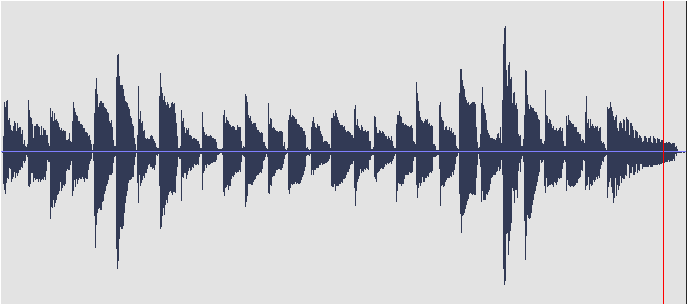Guitars

Sunday, November 30, 2014
Friday, November 28, 2014
Thursday, November 27, 2014
Tuesday, November 25, 2014
TECHNICAL POST : Recording a guitar "mandolin-like"
When I started recording multi-track music (in 2001), I discovered something which is actually trivial, thinking about it, but an entire world appeared to me, which I could use for my recordings.
One of the limitation of the guitar (guitarists know it) is that we cannot play high notes (above B, or some "non standard guitars" C-sharp). And moreover, of course guitar cannot handle fast notes, like a violin, for example. Especially amateur guitarists, like I am.
Scavenging on the various functions of a normal Wave editor, I discovered this "time-pitch" shift/stretch function. The function is very simple. Giving the various samples (44kHz in a normal CD recording), the program copies some points of the function, or deletes some others, depending on the ratio used by the user.
Now, suppose that you record something, anything you wish. What you will get in the recorded file is a waveform which is the function of pressure P(t) which originates the recorded sound. For example, this is a C+ scale, played with my guitar. Waveform and sound.
Suppose now that you want to "compress" this P(t) of a factor 2 in time., the new function P'(t) is then defined like this:
P'(t)=P(2*t)
Same shape of the figure above, with an x-shrink factor of 2
What about the musical effect? Of course, from a mathematical point of view, the new function has a sound with a double frequency. This means that you will get a sound which is an octave higher than the original one. What's more, the SHAPE of the sound of course takes into account also the harmonic sounds (overtones) generated by the instruments (my guitar, in this case). So, the new P'(t) raises an octave everything. From a practical effect, it is like the new sound is generated by an instrument "shrunk" by a factor 2. Can you imagine something like a guitar with 30 cm. long strings? Well, I can! It's the mandoline. You don't believe it? That's my original C+scale, compressed by a factor 2.
Of course, the same holds in case you want to double the time. You will get an octave lower sound, but it's like it's done by a 2.5 meters long guitar. Like a Contrabass.
This way, it's possible to extend the notes of the guitar to the violine's highest tones, and to the contrabass lowest tones. And cover a full orchestra sound.
Here's an example of what I did:
-Mozart's Overture to "Die Hochzeit des Figaro". 11 tracks. Some of those (if I remember correctly, 4) are natural guitars. The others, are "mandoline-like" instruments. It took me an entire month of hard work, but I'm pretty satisfied with the result.
Subscribe to:
Comments (Atom)

